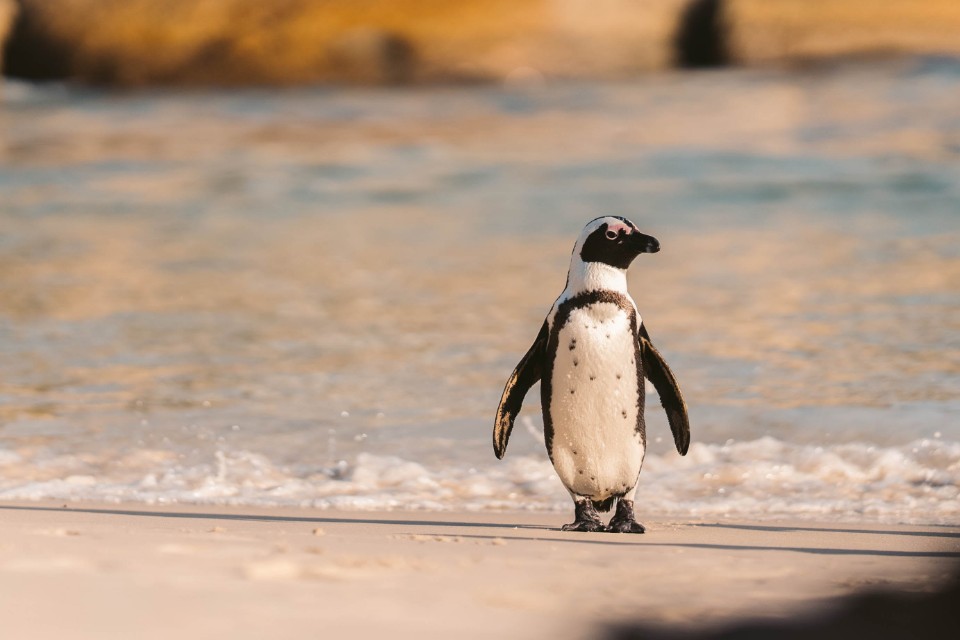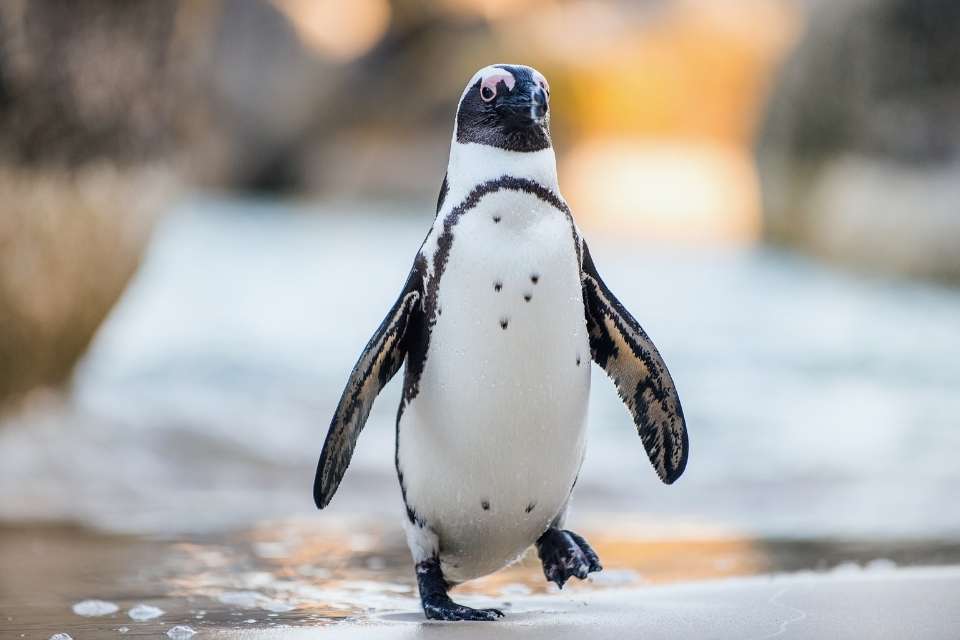When it comes to penguins, we often think of cold, icy climates. However, did you know that there are actually penguin species that thrive in warm weather? In fact, out of the 18 known penguin species, 14 can tolerate and even thrive in warmer regions. This includes the African penguin, also known as the jackass penguin, which can survive in hot temperatures.
These warm weather penguins have developed unique strategies to cope with the heat. They spread their wings and shade their feet from the sun to regulate their body temperature. They also lay their eggs in cracks and crevices of rocks, protecting them from the scorching heat.
However, it’s important to note that while some penguins can tolerate warm temperatures, most penguins are unable to withstand high heat due to their physical features, such as the insulation on their flippers and feet.
Key Takeaways:
- Penguins can live in warm climates, with 14 out of 18 species adapted to thrive in warmer regions.
- Warm weather penguins have strategies to cope with the heat, such as spreading their wings and shading their feet.
- Most penguins are unable to tolerate high temperatures due to their physical features.
- The African penguin, also known as the jackass penguin, can survive in hot weather.
- Conservation efforts are crucial to protect penguins in both cold and warm climates.
Penguins in Tropical Climates
Did you know that penguins can thrive in tropical climates? While we often think of penguins as inhabitants of icy regions, there are species that have adapted to hot environments.
One such example is the Galapagos penguin, found exclusively on the Galapagos Islands in Ecuador. These unique penguins have developed physical features to help them cope with the heat, such as spreading their flippers and covering their feet to protect them from the scorching sun.
Unlike their counterparts in cold regions, penguins in tropical climates face different challenges. Rising temperatures can lead to reduced food supply, affecting both adult penguins and their chicks.
It can also impact their breeding patterns, further jeopardizing their survival. Despite these obstacles, penguins in tropical regions have managed to carve out their niche in the ecosystem.
“Our research has shown that penguins in tropical climates have impressive adaptations that allow them to thrive in hot environments,” says Dr. Jane Peterson, a marine biologist. “They have evolved over time to make the most of the resources available to them and find innovative ways to stay cool.”
It’s fascinating to think about these warm-weather penguins and the unique strategies they have developed. While they may be a rare sight compared to their cold-climate counterparts, they are a testament to the incredible adaptability and resilience of these charismatic birds.
Penguins and Global Warming
Global warming is having a profound impact on penguin populations in warm regions. Rising temperatures pose a serious threat to these incredible creatures, leading to heat stress and dehydration.
Penguins rely on their environment for survival, and the changing climate is putting their population at risk.
The effects of global warming are particularly intense during the molting season between February and April. As the temperature rises, penguins struggle to regulate their body heat and remain hydrated. Heat stress can result in organ failure, leading to a decline in the penguin population in warm areas.
“The rise in temperatures has resulted in heat stress and dehydration for penguins, especially during their molting season between February and April.”
It is crucial that we address the challenges posed by global warming to protect penguins in warm climates. Conservation efforts are essential to preserve their habitats and ensure their long-term survival.
By taking action now, we can mitigate the impacts of global warming and safeguard these incredible creatures for future generations.
Penguins in Unusual Habitats
While we often envision penguins in cold, snowy environments, it may come as a surprise that these fascinating creatures can also thrive in habitats beyond their traditional stomping grounds.
Penguins have been observed in coastal areas, deserts, and even non-snowy regions, showcasing their adaptability and resilience.
Penguins in Coastal Areas:
Coastal regions provide unique habitats for certain penguin species. One such example is the Magellanic penguins found on the edge of coastal Patagonia in Argentina. Every year, these penguins migrate to Punta Tombo to rear their young.
Despite the heat, they have developed adaptations to survive in these coastal areas, such as their thick layer of fat, which provides insulation and helps regulate body temperature.
Penguins in Deserts:
Believe it or not, there are penguins that have made their homes in deserts. South America is home to most desert-dwelling penguins, where they have evolved to thrive in arid environments.
These penguins, such as the Humboldt and African penguins, have unique physical and behavioral adaptations that allow them to navigate the challenges of living in extreme heat. Their ability to survive and reproduce in these harsh conditions is a remarkable testament to their resilience.
Overall, the presence of penguins in these unusual habitats serves as a reminder of their incredible adaptability. It also highlights the importance of understanding and protecting these diverse environments to ensure the continued survival of penguin populations in both cold and warm climates.
By studying and conserving these unique habitats, we can contribute to the preservation of these incredible creatures for future generations to enjoy.
Conclusion
Throughout this article, we have explored the fascinating world of penguins in warm climates and their incredible adaptations to heat.
Contrary to popular belief, the majority of penguin species thrive in regions with warm temperatures, showcasing their remarkable resilience and ability to adapt.
From the African penguin in South Africa to the Galapagos penguin in Ecuador, these warm weather penguins have evolved unique strategies to cope with the heat.
Spreading their wings and shading their feet from the sun are just a few of the ways they regulate their body temperature and ensure their survival.
However, it is crucial to address the challenges that penguins face in the face of global warming. Rising temperatures can lead to heat stress, dehydration, and a decline in penguin populations.
It is our responsibility to take action and protect these incredible creatures, both in cold and warm climates, through conservation efforts and mitigating the impacts of climate change.
As we continue to learn more about the adaptations of warm weather penguins, let us appreciate their resilience and work together to ensure their continued existence.
Whether they inhabit snowy landscapes or coastal areas under the scorching sun, penguins remind us of the importance of protecting and preserving our precious natural world.
FAQ
Can penguins live in warm weather?
Yes, penguins can live in warm weather. There are 14 species of penguins that thrive in warmer areas.
Where can penguins be found in tropical climates?
Penguins can be found in tropical climates, such as the Galapagos Islands in Ecuador.
How does global warming affect penguins in warm regions?
Global warming poses a significant threat to penguin populations in warm regions, leading to heat stress and dehydration.
Do penguins live in unusual habitats?
Yes, penguins can be found in rocky coastlines and even deserts.
How have penguins adapted to survive in warm climates?
Penguins in warm climates have developed physical features and behaviors to cope with the heat, such as spreading their wings and shading their feet.


